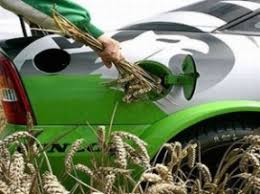This is the VOA Special English Development Report.
Experts say cars and crops are competing for land in many parts of the world. They say this will increase in the future. Until now, most roads have been built over farmland in industrial countries. However, the Worldwatch Institute says more and more farmland is now being lost in developing countries, where populations are often hungry.
Croplands are often covered with hard surface cement because flat, dry areas also make good roads. However, once the cement has been poured, the land can not be easily redeveloped for crops. In the United States, more than six-million kilometers of land have been covered by roads. This is enough to circle the Earth at the equator one-hundred-fifty-seven times. The United States has more than two-hundred-million vehicles.
The Worldwatch Institute says the increase in roads in developing countries is just starting to become an issue. It says more than eleven-million new cars are added to the total number of vehicles around the world each year. Many of these new cars are in developing countries. This means the battle between crops and cars is starting to affect farming areas in countries where hunger is common.
The Worldwatch Institute says there is not enough land in several developing countries to support transportation systems for cars and to feed the people. These countries include China, India, Indonesia, Bangladesh, Pakistan, Iran, Egypt and Mexico.
The Worldwatch Institute says it is wrong for developing countries to financially support a car industry with money collected from taxpayers. It says this takes money from poor people to support rich people. Instead, it says countries should build new transportation systems that help the whole population.
Experts say nearly three-thousand-million people are expected to be added to the world’s population during the next fifty years. The Worldwatch Institute says most of these people will live in developing countries where there is not enough land to feed everyone and still have cars. It says food security in the future will depend on governments investing more on trains and bicycle systems and less on roads and car systems.
This VOA Special English Development Report was written by Jill Moss.
